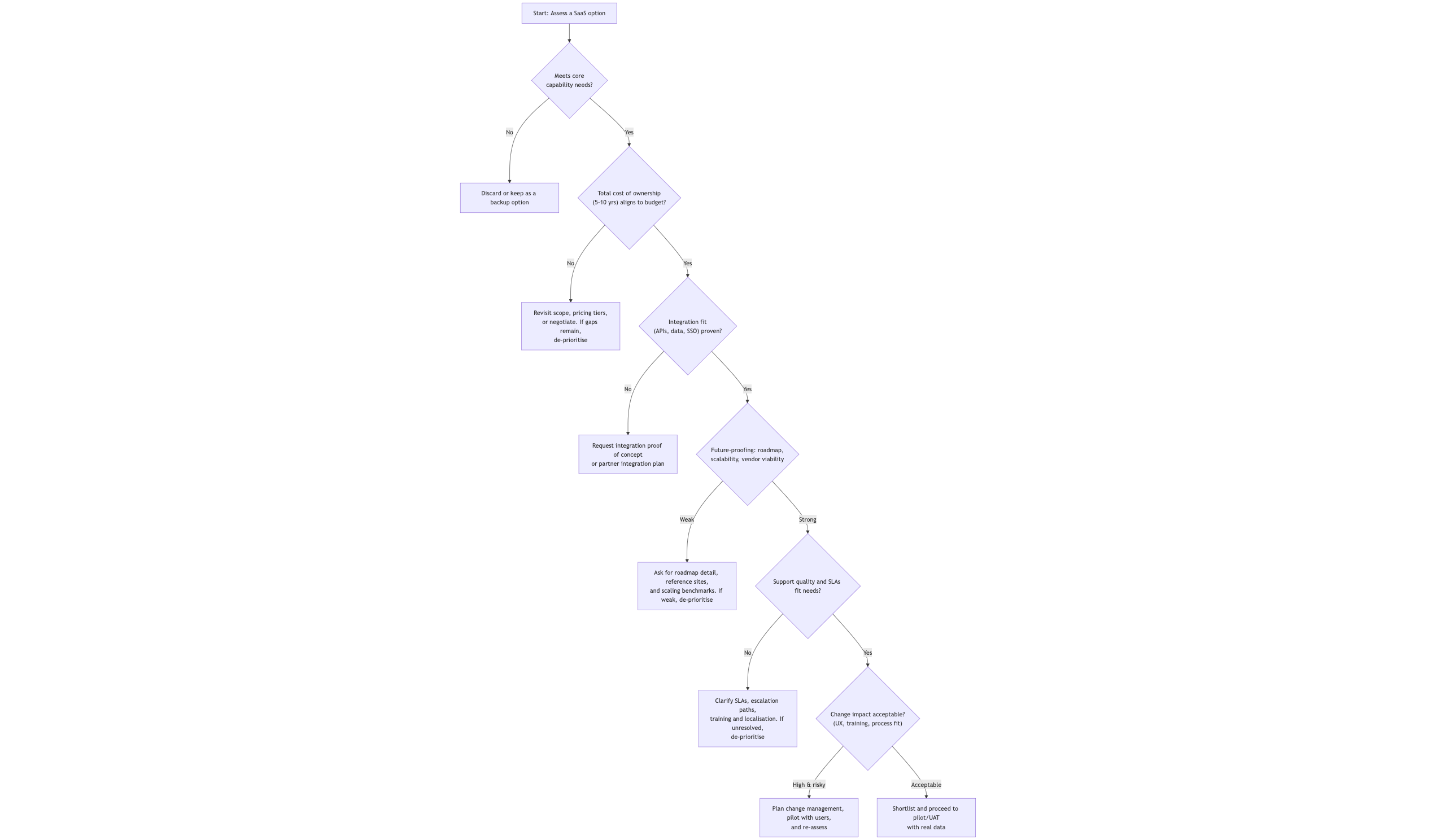Not all SaaS platforms are created equal.
The move to Software-as-a-Service is now a well-trodden path, but choosing which SaaS platform to adopt is still one of the most critical decisions your organisation will face. Pick the wrong fit, and you risk disruption, spiralling costs, and frustrated staff. Get it right, and you set your business up with the scalability and flexibility to thrive.
So how do you know which SaaS platform is right for your organisation? Here are the key questions to ask before making the leap.
Does it fit your industry?
Every industry has its quirks. A SaaS solution that works well in retail may fall short in grant management, healthcare, or government. Look beyond the sales pitch and check whether the platform has been designed with your industry’s compliance requirements, reporting standards, and workflows in mind.
At Biz Hub, we’ve seen this first-hand. For example, in the agriculture sector, we’ve integrated SaaS tools with on-farm data platforms, while in government, we’ve worked with systems that demand strict privacy and security controls. A platform that doesn’t understand these needs will leave you paying for expensive customisations later.
Can it integrate with your existing systems?
Modern organisations rarely operate on a single system alone. Finance, HR, customer management, GIS, analytics, and sector-specific platforms all need to connect. If your new SaaS platform can’t integrate smoothly, staff end up juggling spreadsheets or resorting to shadow IT.
When evaluating vendors, ask:
- Does it offer APIs or integration services?
- Can it connect to the finance or CRM platforms you already rely on?
- How easily can it scale as you add new tools?
⠀
Biz Hub’s work frequently involves bridging these gaps, whether that’s linking SaaS platforms with finance systems like Xero or connecting to ArcGIS Online for location-based insights. Integration should be seen as a must-have, not an afterthought.
Will it scale with you?
Your needs today won’t look the same in three years. Choose a SaaS platform that can grow with your business — adding users, handling larger datasets, and supporting new services without requiring a costly re-platform later.
Scalability isn’t just about capacity. It’s about flexibility, too. If you’re locked into rigid workflows or pricing models, the platform that seems like a bargain now could quickly become a blocker to growth.
What support is available?
No system is perfect. When problems arise, the quality of support can make or break your SaaS experience. Check whether your vendor offers responsive local support, clear documentation, and training resources for your staff.
Many of Biz Hub’s customers tell us they value being able to simply pick up the phone and ask a question, or get a prompt reply to an email, rather than logging a ticket with a large multi-national vendor and waiting in a queue with no clear idea when they’ll get an answer.
Too often, businesses underestimate the cost of poor support. Days lost waiting for overseas help desks or unhelpful ticket responses translate into real business disruption.
Cost vs capability vs future-proofing
It’s tempting to choose the cheapest option or the one with the most brand recognition. But rushing this decision often creates bigger problems down the line. The right question isn’t “Which is cheapest?” but “Which platform balances cost, capability, and long-term fit?”
Think about:
- Total cost of ownership over 5–10 years.
- The value of built-in features versus bolt-on customisations.
- The ongoing opex cost of licences — both per-user and per-tier. SaaS pricing can climb quickly as your team or feature use grows.
- Whether the platform has a clear roadmap for innovation.
- How long the platform has been around, and whether it already has established customers. Committing your core business operations to a brand-new platform that may not be around in 12 months carries serious risk. Proven longevity and reference customers are strong indicators that the vendor, and your investment, will stand the test of time.
Also, keep in mind the difficulty of leaving once you’ve invested. Vendor lock-in is real — and can be costly if you later find the platform doesn’t scale with your needs. A little extra investment upfront, paired with a clear-eyed view of licence and subscription models, can save years of headaches, hidden costs, and stalled growth later.

Don’t just follow the crowd
The most popular option isn’t always the right one. Every organisation has unique needs. Choose based on fit, not hype, and make sure the platform is aligned to your strategy, not just today’s wishlist.
Where to next?
Choosing the right SaaS platform is about more than features — it’s about ensuring your business is set up for the future. We’ve seen this first-hand with Green Industries SA, where selecting the right platform enabled us to preserve 15 years of data and unlock powerful new reporting in their GRID system.
Once you’ve chosen your platform, the next challenge is protecting your history during the move. Read our guide on How to Preserve 20+ Years of Business Data When Moving to SaaS to see how to keep decades of valuable records intact while modernising your operations.

